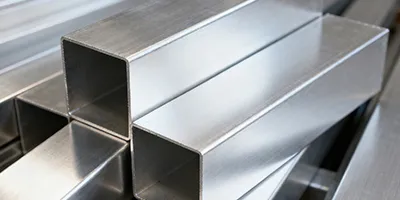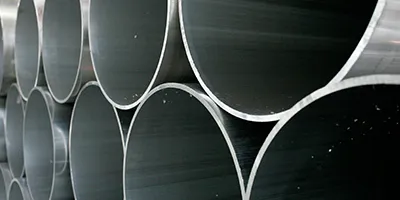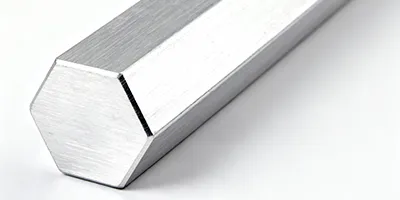FAQs
What is Zhongpeng’s production capacity?
What is Zhongpeng’s production capacity?
The company has introduced advanced casting equipment from the United States, Canada, and South Korea, capable of producing aluminum alloy extrusions from series 1 to 7, with a maximum diameter of 582 mm. Currently, the company operates over 90 advanced aluminum extrusion production lines, with extrusion press capacities ranging from 5 MN to 125 MN. The 125 MN hydraulic aluminum extrusion press is an advanced machine with the highest extrusion force in its class. Additional high-end auxiliary equipment includes Behringer bandsaws, 24 MN hydraulic straightening presses, and vertical quenching furnaces. Annual extrusion capacity reaches 600,000 tons, and rolling production capacity reaches 400,000 tons.
What Are the Payment Terms?
What Are the Payment Terms?
For industrial aluminum products, 30% prepayment is required, with the remaining 70% due before shipment. For automotive and rail customers, project-specific terms may allow 30 to 90-day payment periods.
How is product quality ensured?
How is product quality ensured?
- Raw Material Control: Use of durable aluminum alloys; supplier qualification and spectrographic analysis (OES) to control impurities.
- Casting Process Control: Automated batching, efficient melting, and online refining (degassing and filtration) with continuous monitoring of temperature and composition.
- Production Process Monitoring: Standardized operation procedures (SOP) with microstructure and fracture inspections to prevent defects.
- Finished Product Testing: Comprehensive mechanical and chemical performance testing, including tensile strength, hardness, spectrometry, and salt spray tests, compliant with ISO and national standards.
How is the quality of outsourced extrusion production ensured?
How is the quality of outsourced extrusion production ensured?
Technical supervisors are stationed on-site to oversee production; raw materials are centrally supplied by the company; each batch follows internal testing standards and third-party verification (SGS) for key indicators. A traceability system using laser marking tracks products to individual furnace numbers.
Are tooling fees required for purchasing T, I, angle, U-channel, or tube profiles?
Are tooling fees required for purchasing T, I, angle, U-channel, or tube profiles?
Standard aluminum T, I, angle, U-channel, and tube profiles supplied by the company do not require mold fees. Custom profiles require a one-time die development charge.
What types of aluminum profiles can be supplied?
What types of aluminum profiles can be supplied?
The product range includes standard aluminum profiles (round, square, and rectangular tubes; angle and channel profiles; T and I sections), customized extrusions, aluminum sheets, bars, and tubes, as well as precision-processed aluminum components for automotive, marine, and aerospace applications.
How are aluminum profiles applied in bridge construction?
How are aluminum profiles applied in bridge construction?
With advances in aluminum smelting and alloy performance, aluminum has become widely used in bridge engineering, including pedestrian bridges, approach spans, and stair structures.
What are the advantages of aluminum alloys in bridge construction?
What are the advantages of aluminum alloys in bridge construction?
Aluminum alloys offer light weight, high strength, durability, and low maintenance requirements, providing performance and cost advantages over steel. As one of the most abundant metallic elements in the Earth’s crust and easily produced through electrolysis, aluminum alloys have significant potential for future bridge construction applications.
Which aluminum square tube is most suitable for curtain wall and balcony structures?
Which aluminum square tube is most suitable for curtain wall and balcony structures?
The 6063 series aluminum tube is commonly used in architectural applications. This alloy offers excellent weather resistance and compatibility with various surface finishes, including anodizing and powder coating. The material combines quality with long-term durability, making it suitable for curtain walls, handrails, and balcony structures.
Which material is recommended for lightweight frame structures in automotive applications?
Which material is recommended for lightweight frame structures in automotive applications?
The 6061 and 6082 series aluminum alloys are recommended for automotive components and load-bearing frames. Both alloys provide durable apparition and reliable corrosion resistance, while also contributing to weight reduction and compliance with lightweight structural design requirements.
How should material and surface treatment be selected for solar mounting and support systems?
How should material and surface treatment be selected for solar mounting and support systems?
The 6060 and 6063 aluminum alloys are used for solar mounting and installation frameworks. These materials provide sufficient strength and corrosion resistance for outdoor use. Anodizing is recommended to improve weather resistance and maintain surface stability during long-term exposure.
Which aluminum round tube is suitable for industrial machinery supports and load-bearing structures in transportation systems?
Which aluminum round tube is suitable for industrial machinery supports and load-bearing structures in transportation systems?
6005 and 6082 aluminum round tubes are recommended for use in industrial machinery supports and load-bearing assemblies. Both alloys provide strength and corrosion resistance required for heavy-duty structural applications. Alloy 6082 is particularly suitable for conditions with higher load and safety requirements.
Which aluminum round tube should be used for architectural curtain walls and decorative applications?
Which aluminum round tube should be used for architectural curtain walls and decorative applications?
6063 aluminum round tube is recommended for architectural curtain walls and decorative applications. This alloy provides a smooth surface finish, weather resistance, and good extrusion formability. It can be anodized or painted to improve surface durability and appearance.
Which aluminum round rod is suitable for load-bearing parts in marine or industrial machinery applications?
Which aluminum round rod is suitable for load-bearing parts in marine or industrial machinery applications?
6082 aluminum round rod is recommended for marine and industrial load-bearing components. The alloy provides corrosion resistance and strength required for high-load environments.
Which aluminum round rod should be used for architectural structures?
Which aluminum round rod should be used for architectural structures?
6060 and 6063 aluminum round rods are suitable for architectural applications. These alloys offer corrosion resistance and ease of fabrication, and can be anodized or painted to enhance surface durability and visual appearance.
Which aluminum flat bar is suitable for load-bearing or mechanical structure applications?
Which aluminum flat bar is suitable for load-bearing or mechanical structure applications?
For load-bearing or mechanical parts, 6061 and 6082 alloys are recommended. 6061 offers high strength and corrosion resistance for general structural use, while 6082 provides greater strength and durability for industrial frames and marine components.
Which aluminum U-channel is suitable for industrial machinery and load-bearing structures?
Which aluminum U-channel is suitable for industrial machinery and load-bearing structures?
For industrial machinery frameworks and load-bearing assemblies, 6061 and 6082 aluminum U-channels are recommended. Both alloys combine high strength, corrosion resistance, and weldability, ensuring long-term stability and reliability in structural and mechanical applications.
Which aluminum U-channel material is most suitable for outdoor installations?
Which aluminum U-channel material is most suitable for outdoor installations?
For outdoor environments such as railings, ladders, and architectural fittings, 6063 or 6082 aluminum U-channels are preferred. These alloys provide excellent resistance to corrosion and weathering, and can be enhanced with anodized or painted finishes for extended durability and aesthetic appeal.
For automotive applications requiring T-bars capable of withstanding high loads, which aluminum alloys are recommended?
For automotive applications requiring T-bars capable of withstanding high loads, which aluminum alloys are recommended?
For vehicle components, 6061 or 6082 aluminum T-bars are ideal choices. These alloys provide high strength, corrosion resistance, and weldability, making them suitable for frames, reinforcements, and other load-bearing structures.
Which aluminum alloys are recommended for automotive applications requiring T-bars with high load-bearing capacity?
Which aluminum alloys are recommended for automotive applications requiring T-bars with high load-bearing capacity?
The 2024 aluminum alloy T-bar offers strength and fatigue resistance, ideal for marine and structural applications. Profiles can also be customized through cutting, welding, and surface finishing to meet specific performance requirements.
How can long-term corrosion resistance be ensured for aluminum I-beams used outdoors?
How can long-term corrosion resistance be ensured for aluminum I-beams used outdoors?
For outdoor installations, 6060 or 6061 aluminum I-beams are recommended. When combined with anodizing or painted surface treatment, these materials provide enhanced corrosion resistance suitable for long-term exposure.
Which I-beam alloy is recommended for applications requiring both corrosion resistance and decorative appearance?
Which I-beam alloy is recommended for applications requiring both corrosion resistance and decorative appearance?
The 6063 aluminum I-beam is ideal for such requirements. It features a smooth surface and high corrosion resistance, and supports multiple surface finishing options such as anodizing and painting, meeting both functional and aesthetic needs.
Which aluminum hex bar is suitable for lightweight structures?
Which aluminum hex bar is suitable for lightweight structures?
6060 series hex bars are ideal for lightweight applications. They offer good corrosion resistance, easy machinability, and are well-suited for industrial supports or light structural components.
Which alloy should be selected for mechanical parts requiring durability?
Which alloy should be selected for mechanical parts requiring durability?
For mechanical components, 6061 or 6082 series hex bars are recommended. These alloys provide high strength, corrosion resistance, and fatigue performance, ensuring reliable operation in demanding industrial environments.
Can Zhongpeng produce plates for aerospace applications?
Can Zhongpeng produce plates for aerospace applications?
Yes. With advanced processing equipment and precision-controlled heat treatment systems, such as a 39-meter aging furnace with a ±3°C temperature control tolerance, Zhongpeng manufactures certified reliable aluminum plates for aerospace use.
How is residual stress eliminated during plate production?
How is residual stress eliminated during plate production?
Stretching system with tension up to 40/100 MN ensures complete removal of residual stress after quenching, improving flatness and stability of aluminum plates.
Which aluminum plates are suitable for automotive manufacturing?
Which aluminum plates are suitable for automotive manufacturing?
For automotive applications, high-formability plates (elongation ≥20%, such as 6016/6014-T4/T4P, 5182-O), high-strength plates (tensile strength ≥300 MPa, such as 7075-T4, 7021-T651), corrosion-resistant plates (e.g., 5754-O), and bake-hardenable plates (yield strength increase of 30–60 MPa after coating bake, such as 6111-T4/T4P, 6451-T4/T4P) are recommended.
What types of aluminum extrusions can Zhongpeng provide?
What types of aluminum extrusions can Zhongpeng provide?
We offer standard aluminum extrusions (round, square, and rectangular tubes; angle, channel U, hex bars, and T/I shapes), custom extrusions, aluminum plates, and fabricated components for automotive, marine, and aerospace applications.
What surface treatment options are available?
What surface treatment options are available?
Surface finishing processes include degreasing and alkaline etching, anodizing, electrophoretic coating, powder coating, color sealing, and bake curing.
What deep processing services are offered?
What deep processing services are offered?
Deep processing includes precision CNC machining, stamping, TIG/MIG welding, surface treatment, assembly, and final inspection.
What casting and melting processes are used?
What casting and melting processes are used?
Melting and casting operations include raw material pretreatment, smelting, casting, homogenization, and surface finishing.
Can aluminum profiles be produced in extra-long continuous lengths while maintaining straightness?
Can aluminum profiles be produced in extra-long continuous lengths while maintaining straightness?
Zhongpeng operates long-profile extrusion lines and precision straightening equipment, enabling production of extra-long profiles with guaranteed straightness and surface quality.
Can industrial construction contractors ensure precision and strength when transporting and installing thick aluminum plates and large structural profiles?
Can industrial construction contractors ensure precision and strength when transporting and installing thick aluminum plates and large structural profiles?
Zhongpeng’s aluminum rolling and deep-processing equipment produces high-strength, dimensionally stable plates that retain performance throughout transportation and installation.
How can construction machinery manufacturers ensure structural stability and machining accuracy when using custom aluminum profiles for high-load applications?
How can construction machinery manufacturers ensure structural stability and machining accuracy when using custom aluminum profiles for high-load applications?
The aluminum profiles provided undergo precision extrusion, homogenization, and advanced processing, maintaining high strength and dimensional accuracy to meet the demands of high-load applications.
Are aluminum profiles suitable for high-precision machining and welding when processing complex components on five-axis machining centers?
Are aluminum profiles suitable for high-precision machining and welding when processing complex components on five-axis machining centers?
The aluminum profiles feature smooth surfaces and uniform internal structure, making them well-suited for five-axis machining and welding operations, ensuring the production of highly precise components.
How can high-speed train manufacturers ensure structural strength while achieving lightweight design when selecting large-section aluminum profiles?
How can high-speed train manufacturers ensure structural strength while achieving lightweight design when selecting large-section aluminum profiles?
The high-strength aluminum profiles undergo precision extrusion and homogenization treatment, ensuring structural integrity while reducing body weight to achieve lightweight design objectives.
Can strict dimensional tolerances and surface quality be guaranteed for complex aluminum profiles used in subway and light rail vehicles?
Can strict dimensional tolerances and surface quality be guaranteed for complex aluminum profiles used in subway and light rail vehicles?
Advanced precision extrusion and five-axis machining equipment ensure accurate dimensions and smooth surfaces, meeting stringent tolerance and quality requirements.
How can automotive manufacturers maintain high precision and low residual stress when producing EV battery trays?
How can automotive manufacturers maintain high precision and low residual stress when producing EV battery trays?
Optimized extrusion die design and homogenization processes enable high precision and reduced residual stress or deformation during manufacturing.
Do aluminum profiles used in heat sink manufacturing ensure reliable thermal performance and machining accuracy?
Do aluminum profiles used in heat sink manufacturing ensure reliable thermal performance and machining accuracy?
Yes. Zhongpeng’s aluminum profiles undergo homogenization and heat treatment to achieve outstanding thermal conductivity and high dimensional precision, meeting strict requirements for heat sink production.
Can aluminum profiles for battery pack structures maintain dimensional accuracy and material uniformity during processing?
Can aluminum profiles for battery pack structures maintain dimensional accuracy and material uniformity during processing?
Through optimized die design and advanced precision extrusion technology, Zhongpeng ensures consistent dimensional stability and uniform microstructure, making the profiles ideal for battery pack applications.
How can a photovoltaic frame combine light weight and corrosion resistance during module development?
How can a photovoltaic frame combine light weight and corrosion resistance during module development?
Use of 6063 T5 aluminum alloy together with anodized or powder-coated surface treatment provides the required strength, dimensional precision, and corrosion protection. The combination supports refined appearance and long-term reliability suitable for advanced photovoltaic systems.
What roles do aluminum extrusions serve in the solar energy industry?
What roles do aluminum extrusions serve in the solar energy industry?
Aluminum offers low cost, reduced density, and high electrical conductivity, making it an efficient structural and electrical material. The favorable strength-to-weight ratio allows frame assemblies to resist wind and snow loads without excessive stress on supporting structures, contributing to system stability and durability.
What are the advantages of using aluminum extrusions for solar panel structures?
What are the advantages of using aluminum extrusions for solar panel structures?
- Extrusion processes produce long, rigid profiles that can be connected through mechanical fastening to enable modular and adaptable photovoltaic installations.
- Cost efficiency is achieved through lower material and assembly expenses compared with constructions of silver, copper, or steel while maintaining durability and mechanical integrity.
- Simplified assembly reduces labor requirements and installation time, supporting practical and sustainable solar system deployment.



